Abstract
Computers were used to evaluate the effects of supplying answers to programmed instruction frames. A group experimental design compared passive reading, covert responding to frame blanks, and actively typing answers to blanks with and without immediate confirmation of correctness. Effects of a 315-frame program, teaching elements of programmed instruction design, were evaluated by analyzing answers to posttest generalization questions and an application test. Results strongly supported the effectiveness of requiring the student to supply fragments of a terminal repertoire while working through a program. Students who could either covertly respond to frame blanks or who were required to type frame answers performed significantly better on the frame generalization posttest and, more importantly, carefully followed program rules when preparing elements of a new instructional program.
Keywords: academic behavior, programmed instruction, computer-based instruction, instructional design, generalization
Full text
PDF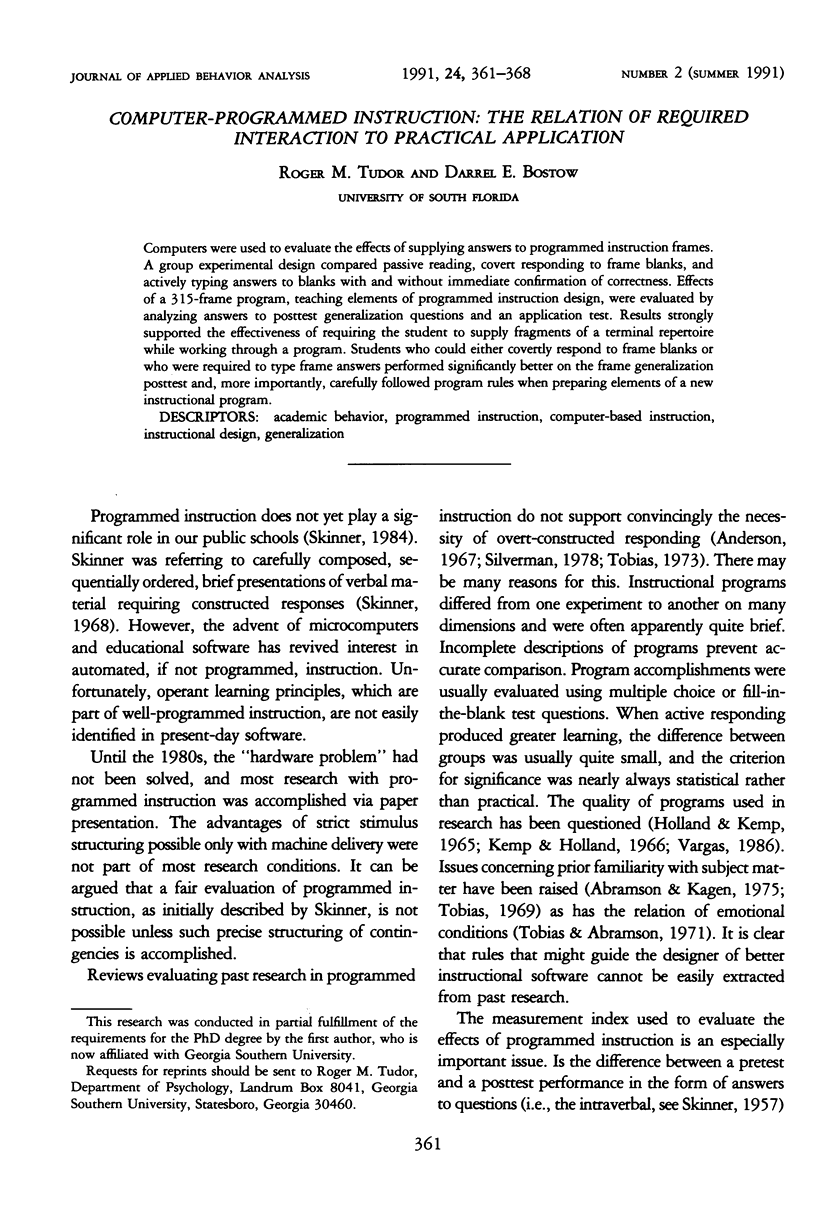
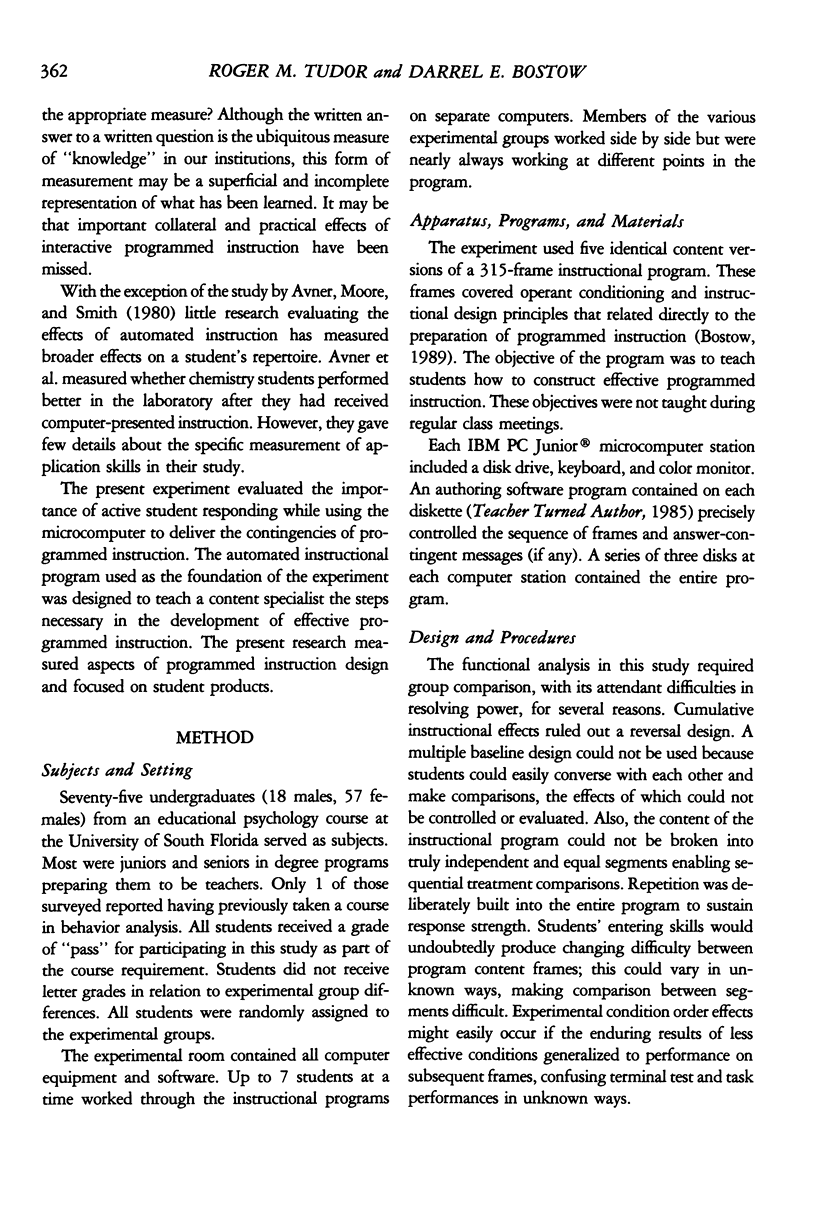
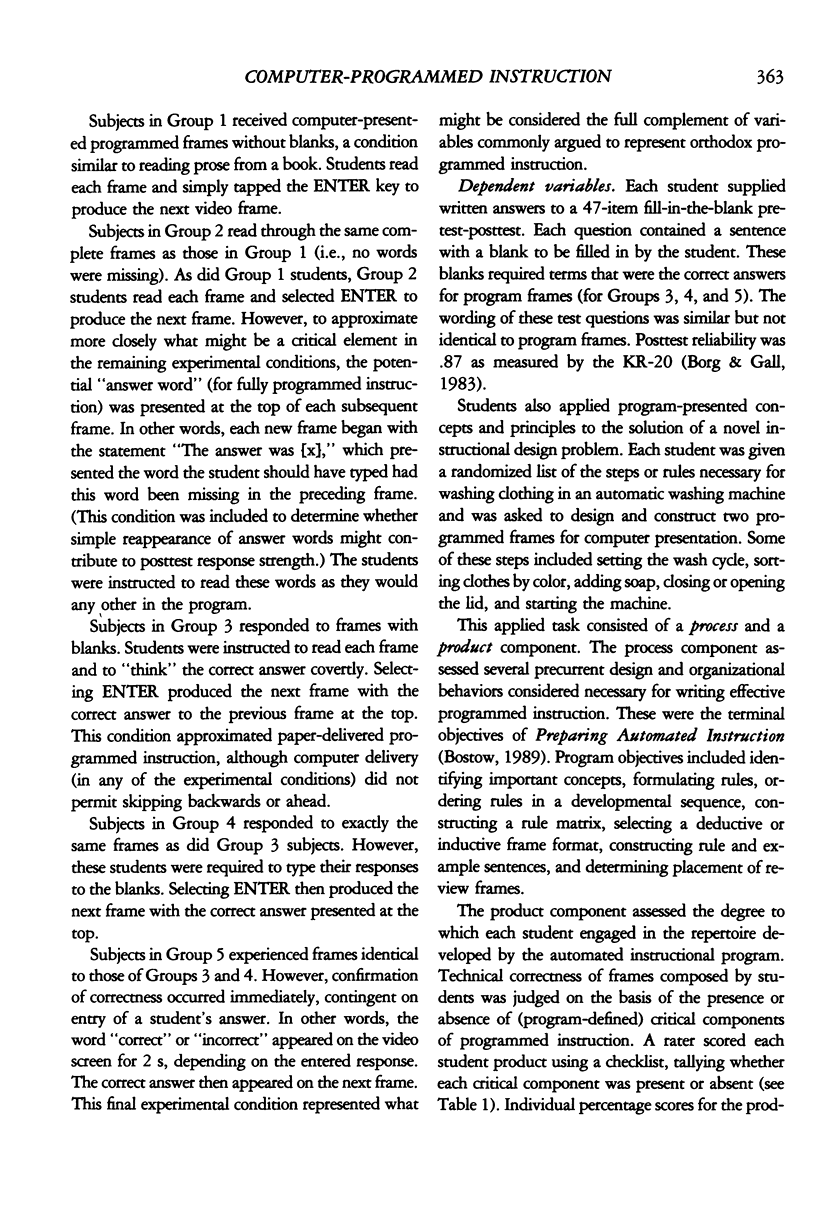
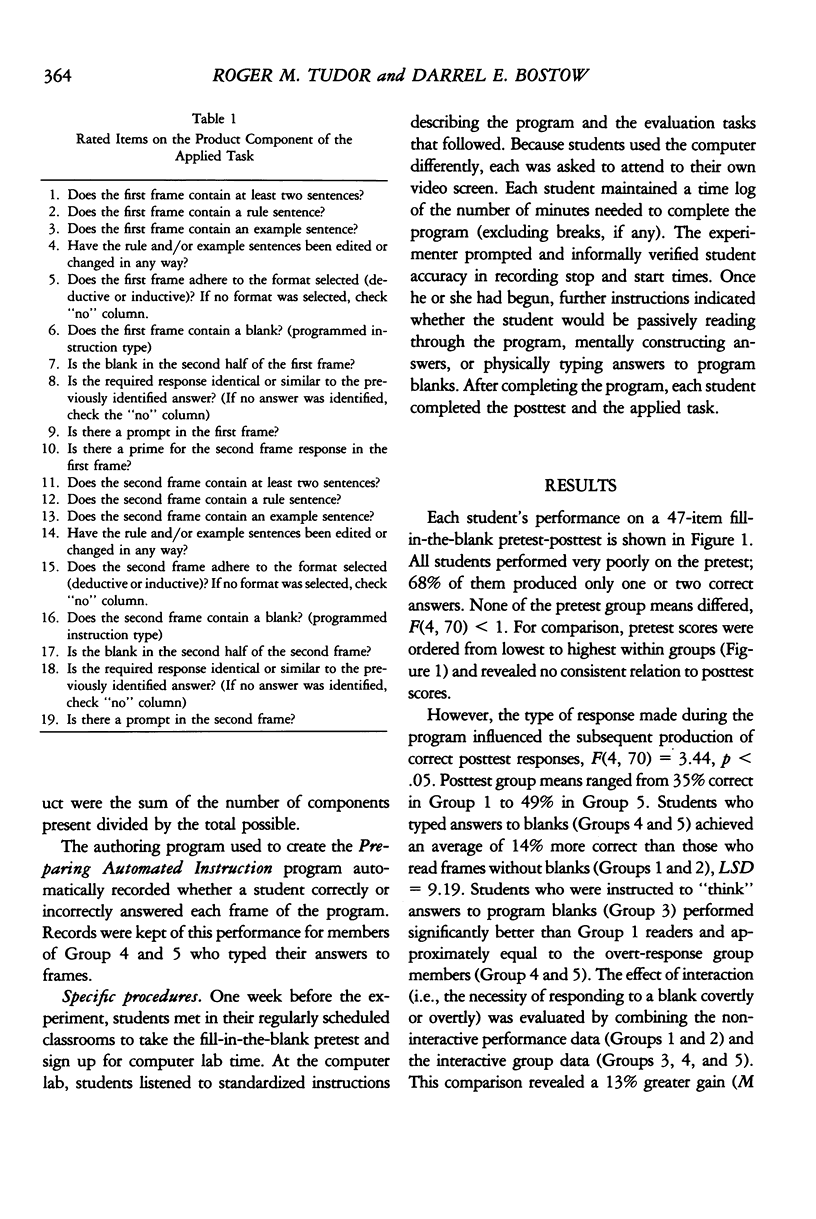
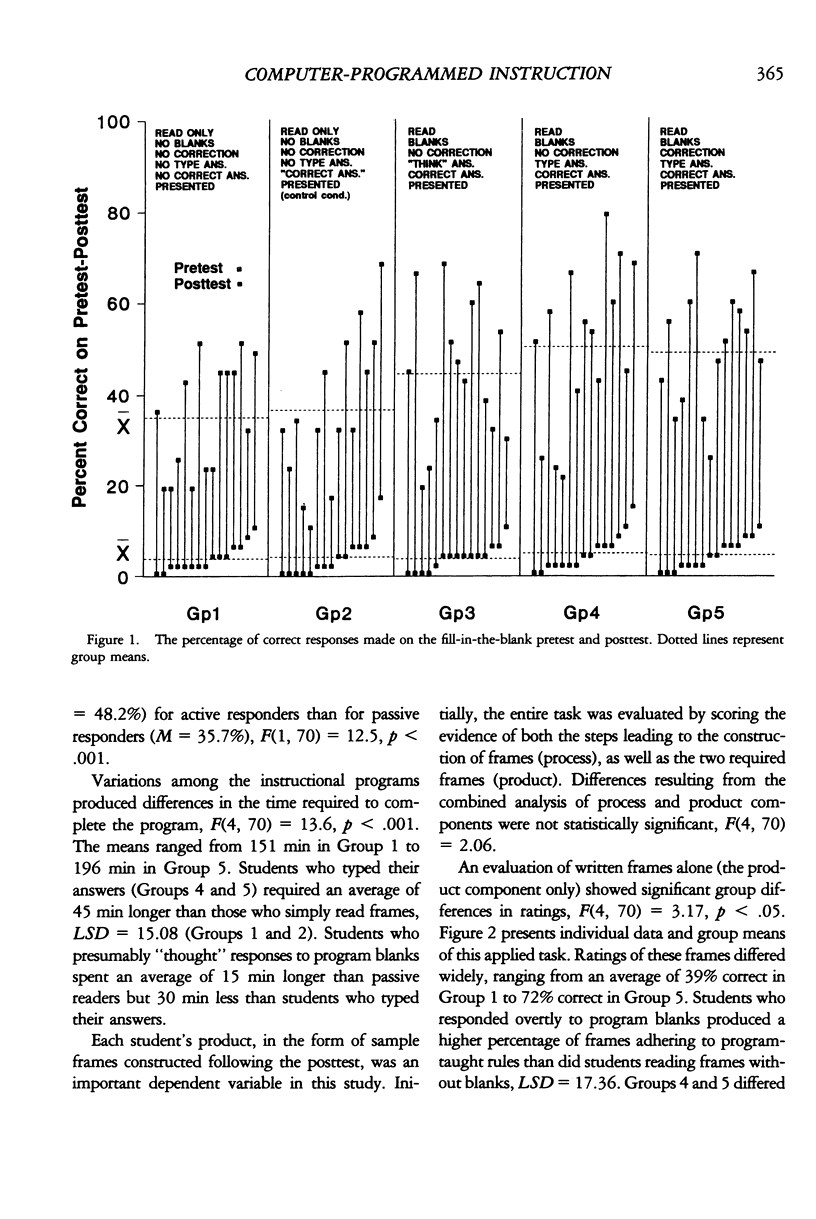
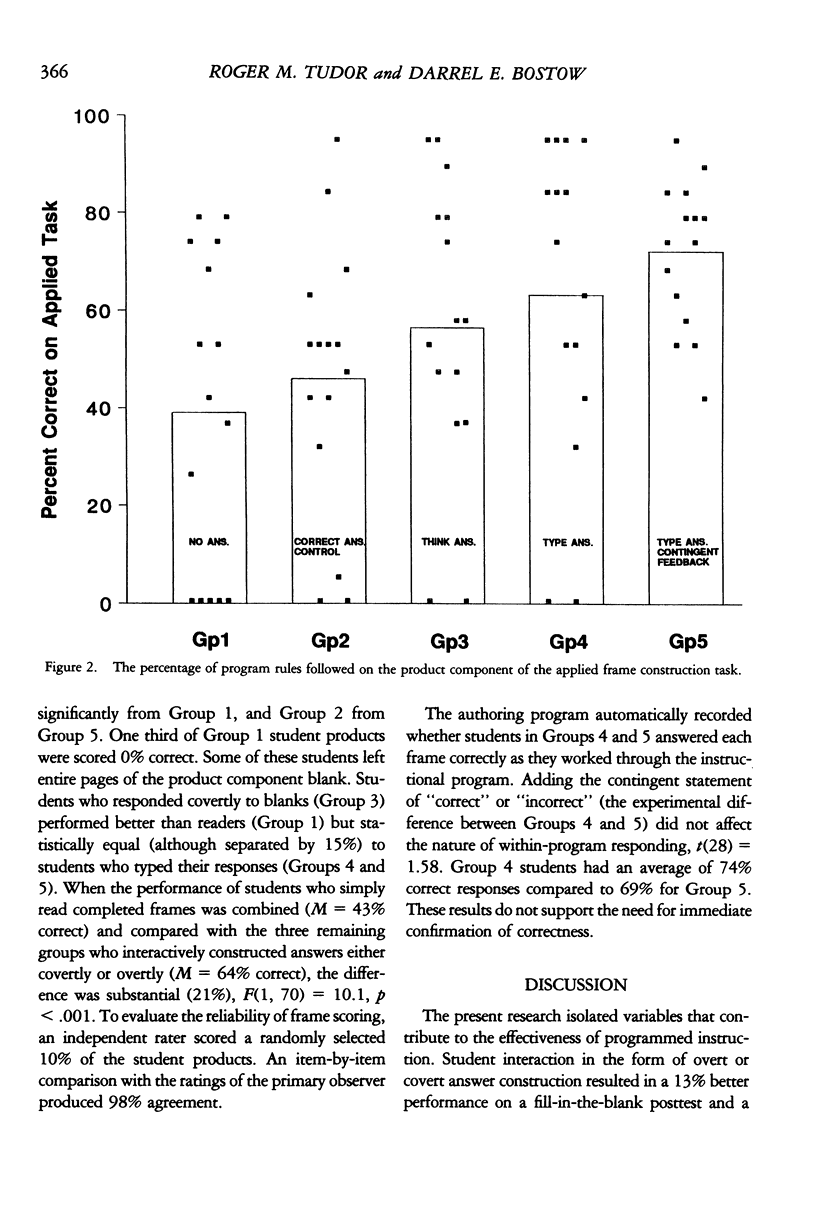
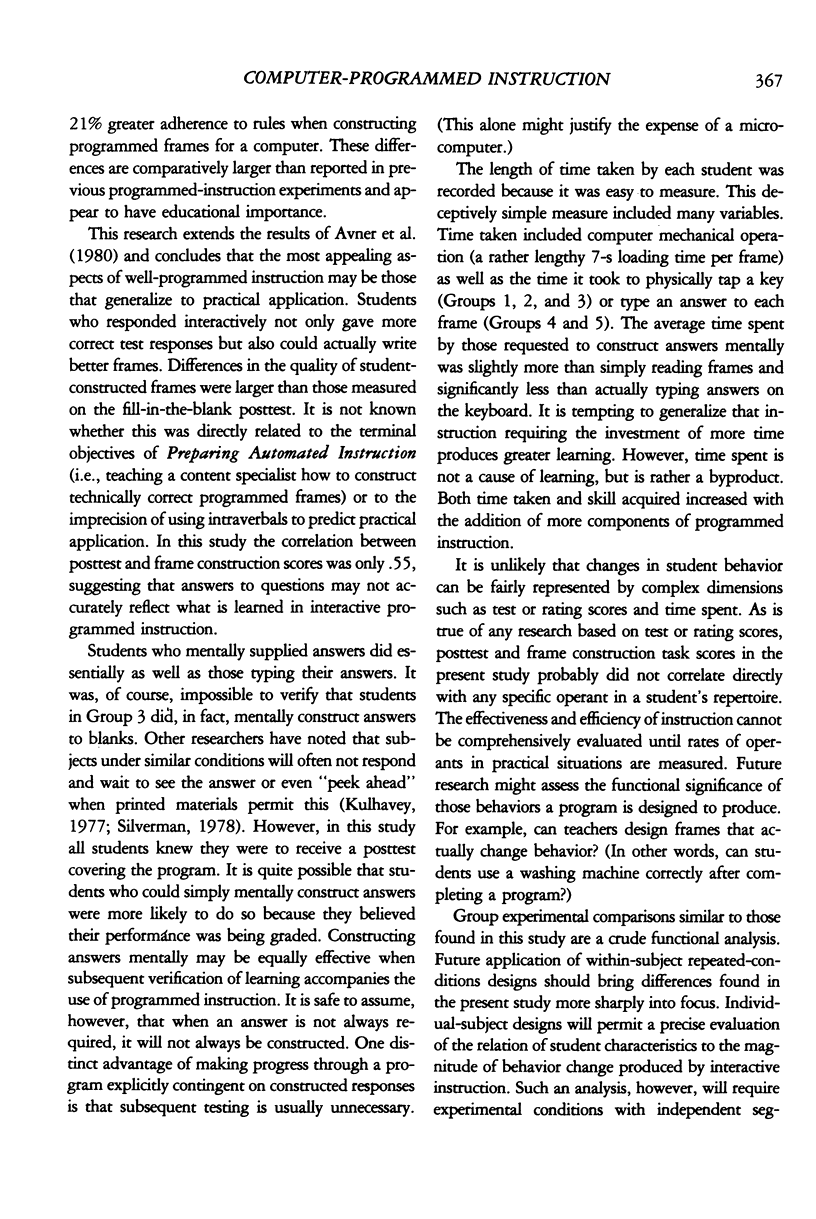
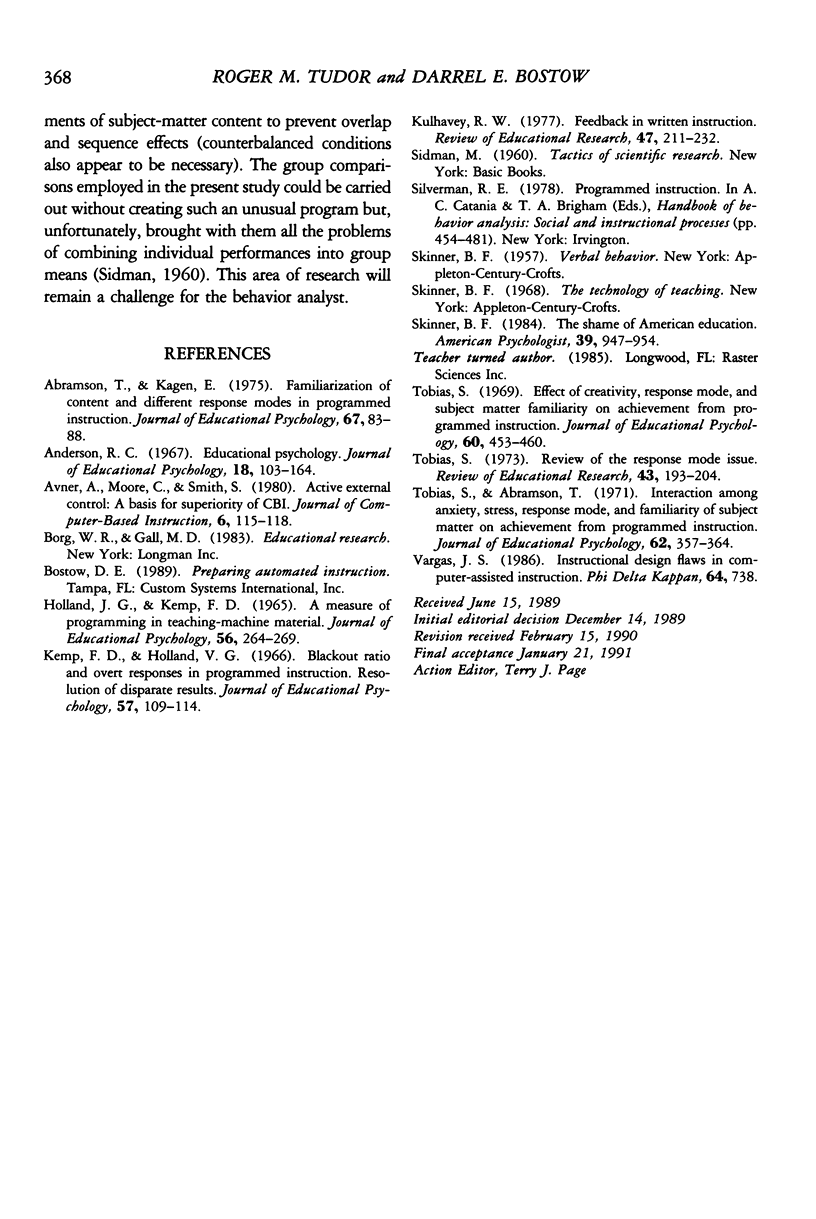
Selected References
These references are in PubMed. This may not be the complete list of references from this article.
- Anderson R. C. Educational psychology. Annu Rev Psychol. 1967;18:129–164. doi: 10.1146/annurev.ps.18.020167.001021. [DOI] [PubMed] [Google Scholar]
- Holland J. G., Kemp F. D. A measure of programing in teaching-machine material. J Educ Psychol. 1965 Oct;56(5):264–269. doi: 10.1037/h0022513. [DOI] [PubMed] [Google Scholar]
- Kemp F. D., Holland J. G. Blackout ratio and overt responses in programmed instruction: resolution of disparate results. J Educ Psychol. 1966 Apr;57(2):109–114. doi: 10.1037/h0023070. [DOI] [PubMed] [Google Scholar]
- Tobias S., Abramson T. Interaction among anxiety, stress, response mode, and familiarity of subject matter on achievement from programmed instruction. J Educ Psychol. 1971 Aug;62(4):357–364. doi: 10.1037/h0031314. [DOI] [PubMed] [Google Scholar]
- Tobias S. Effect of creativity, response mode, and subject matter familiarity on achievement from programmed instruction. J Educ Psychol. 1969 Dec;60(6):453–460. doi: 10.1037/h0028502. [DOI] [PubMed] [Google Scholar]


